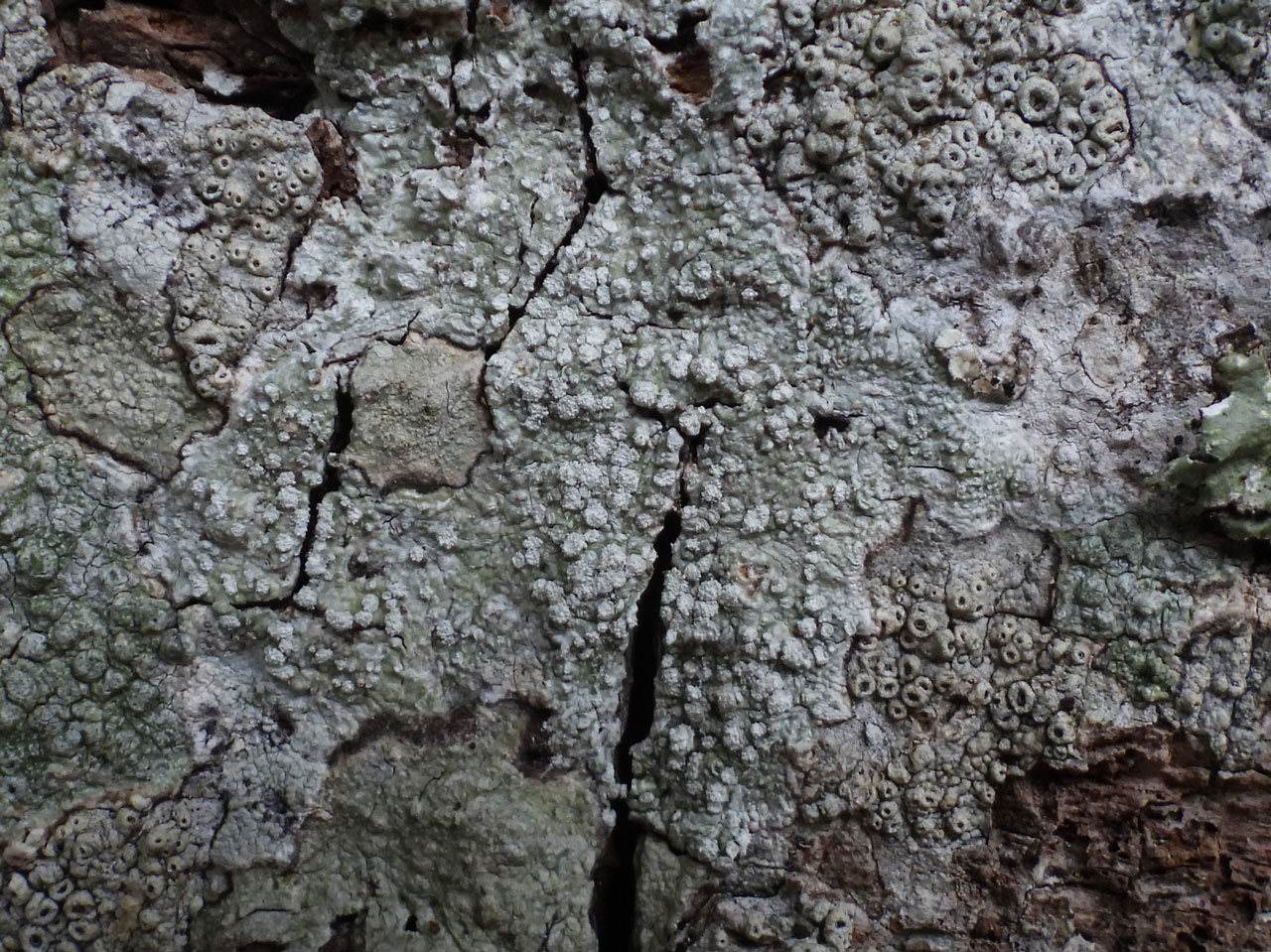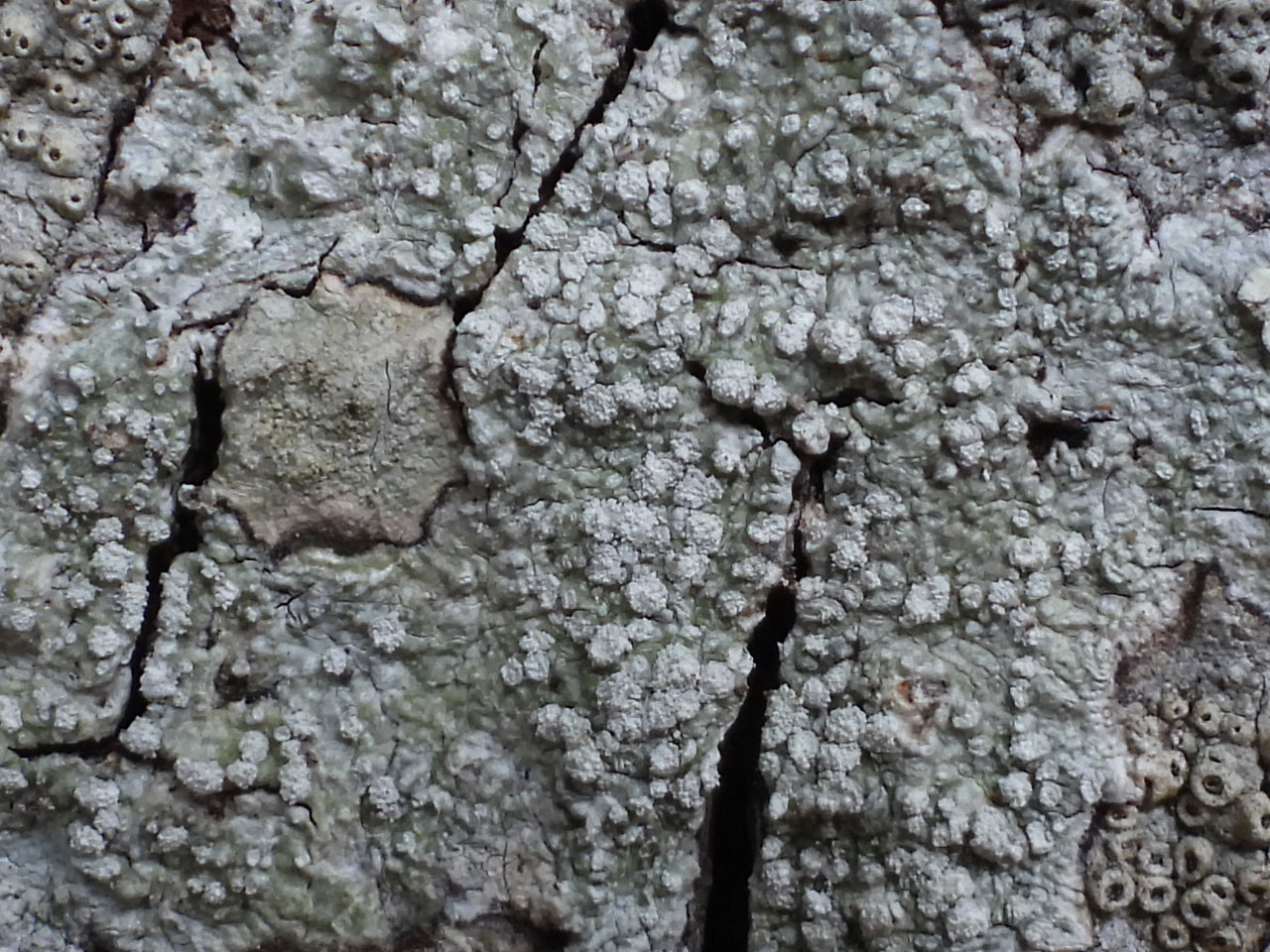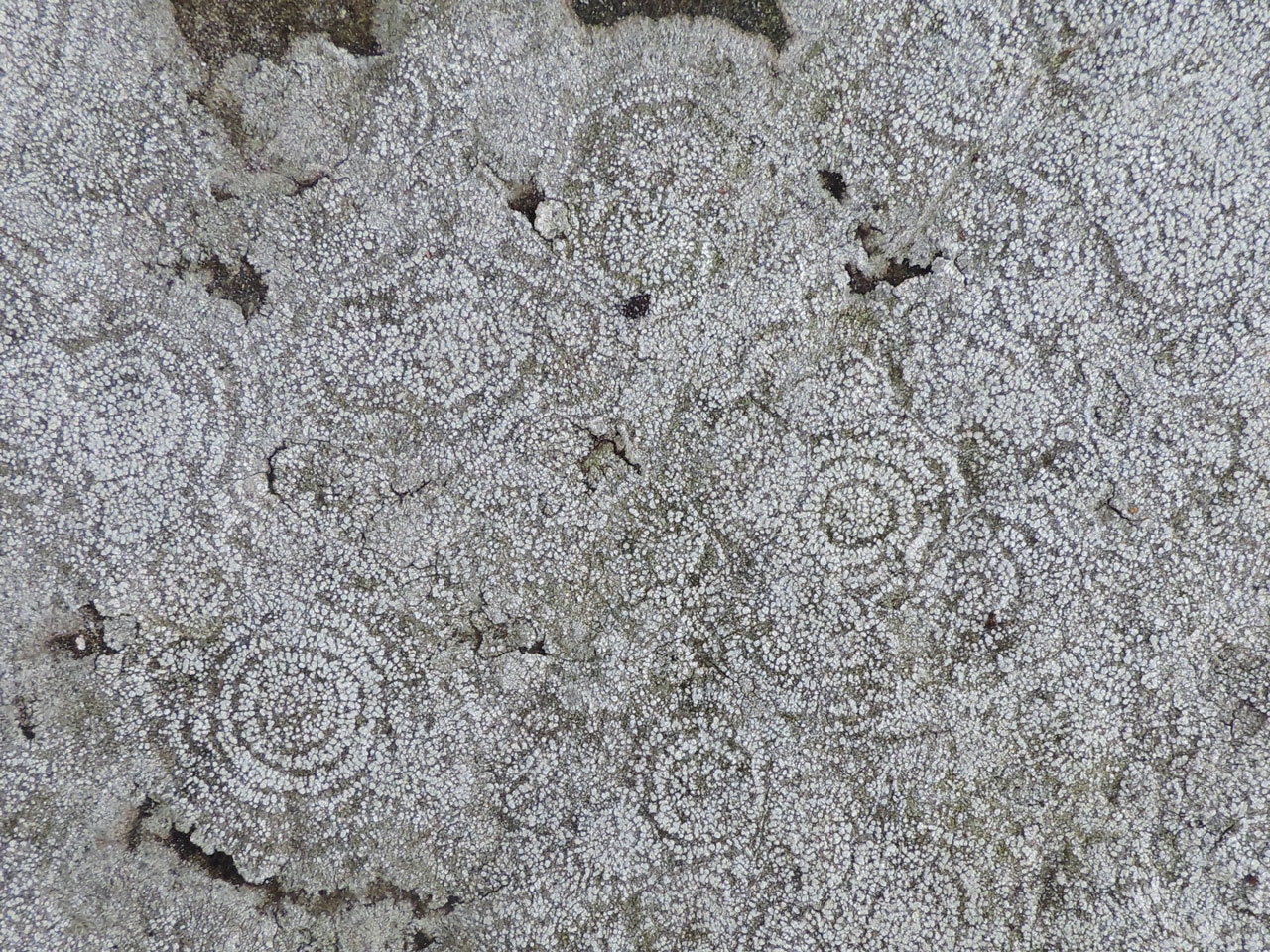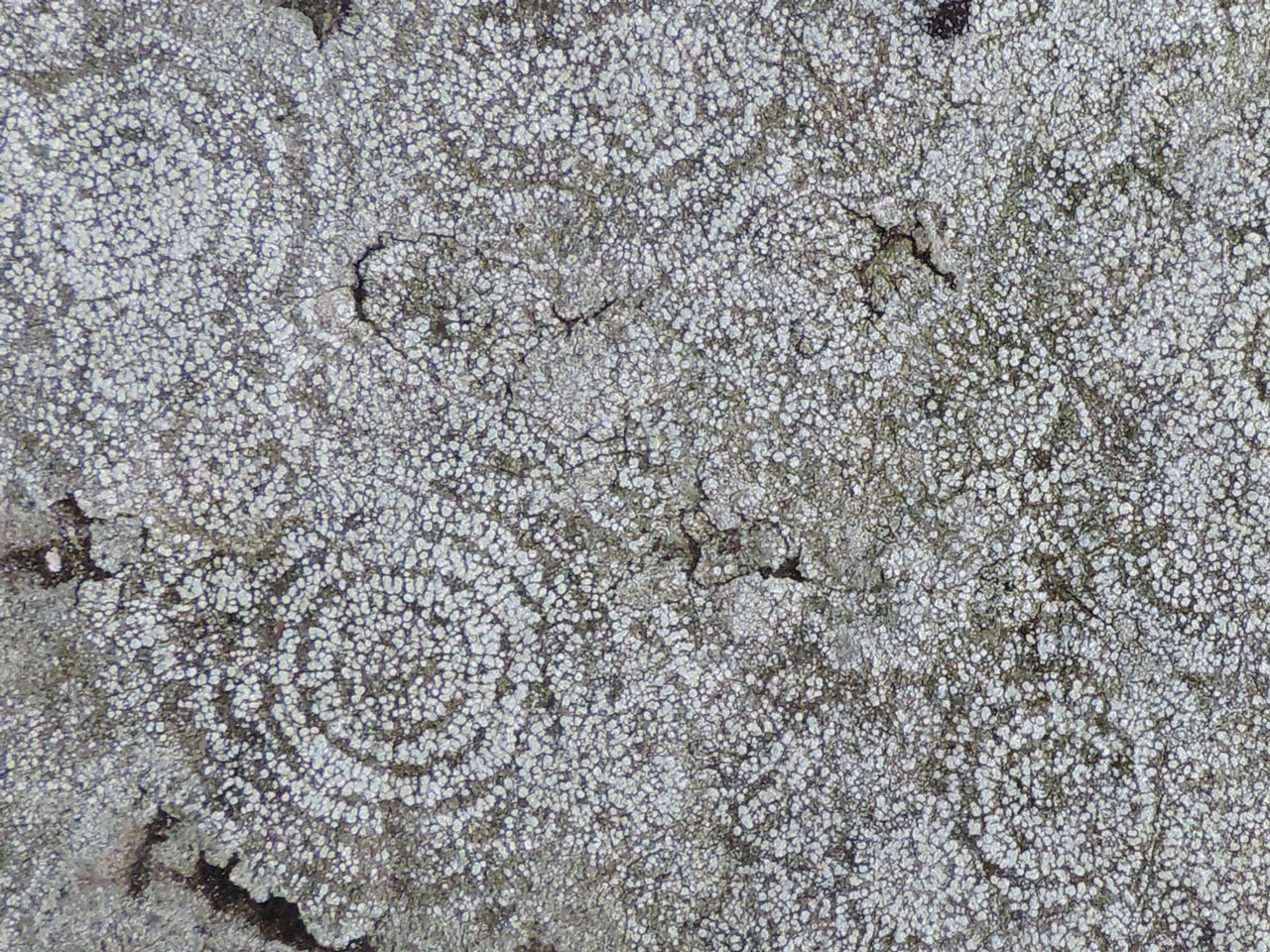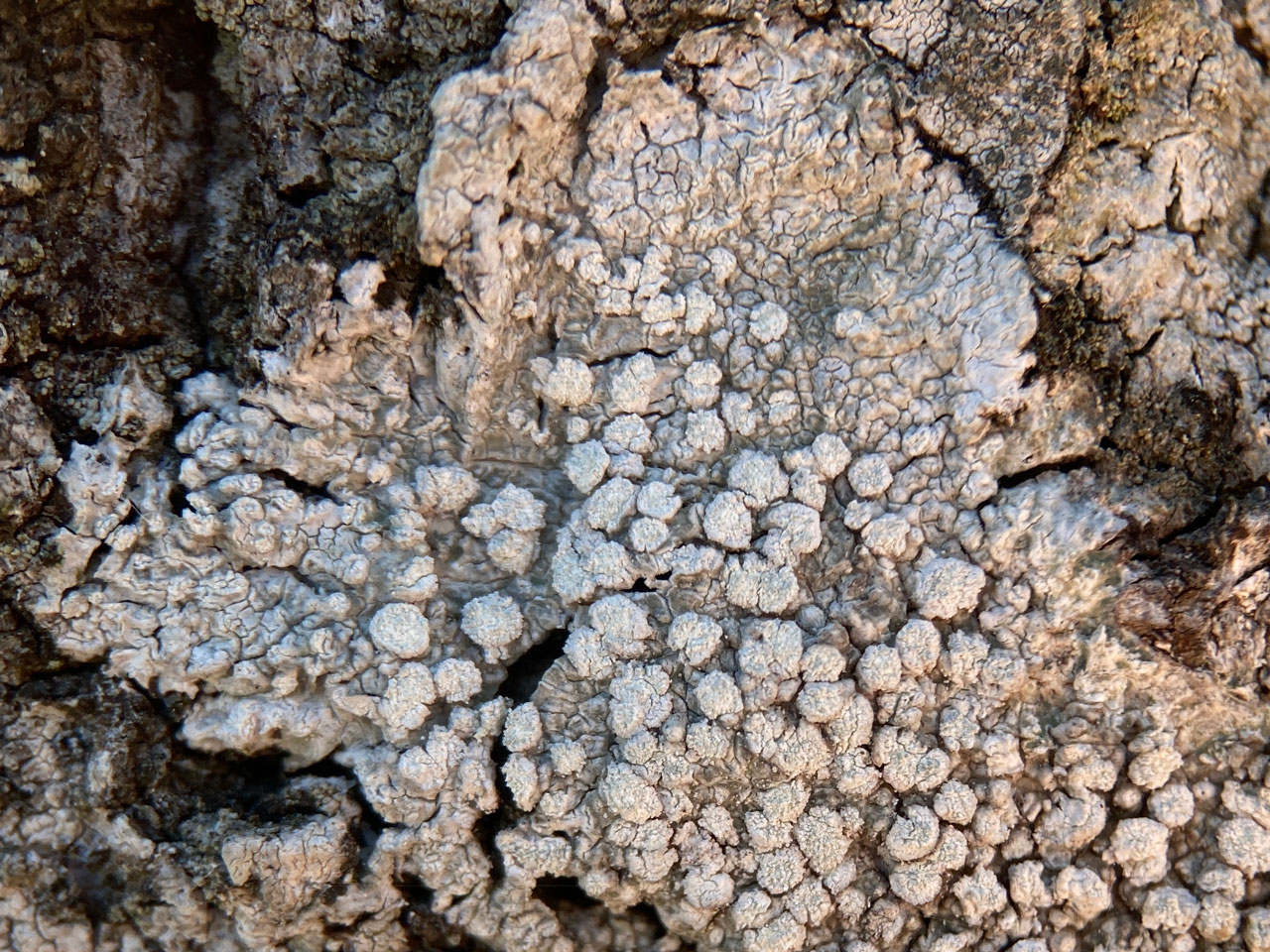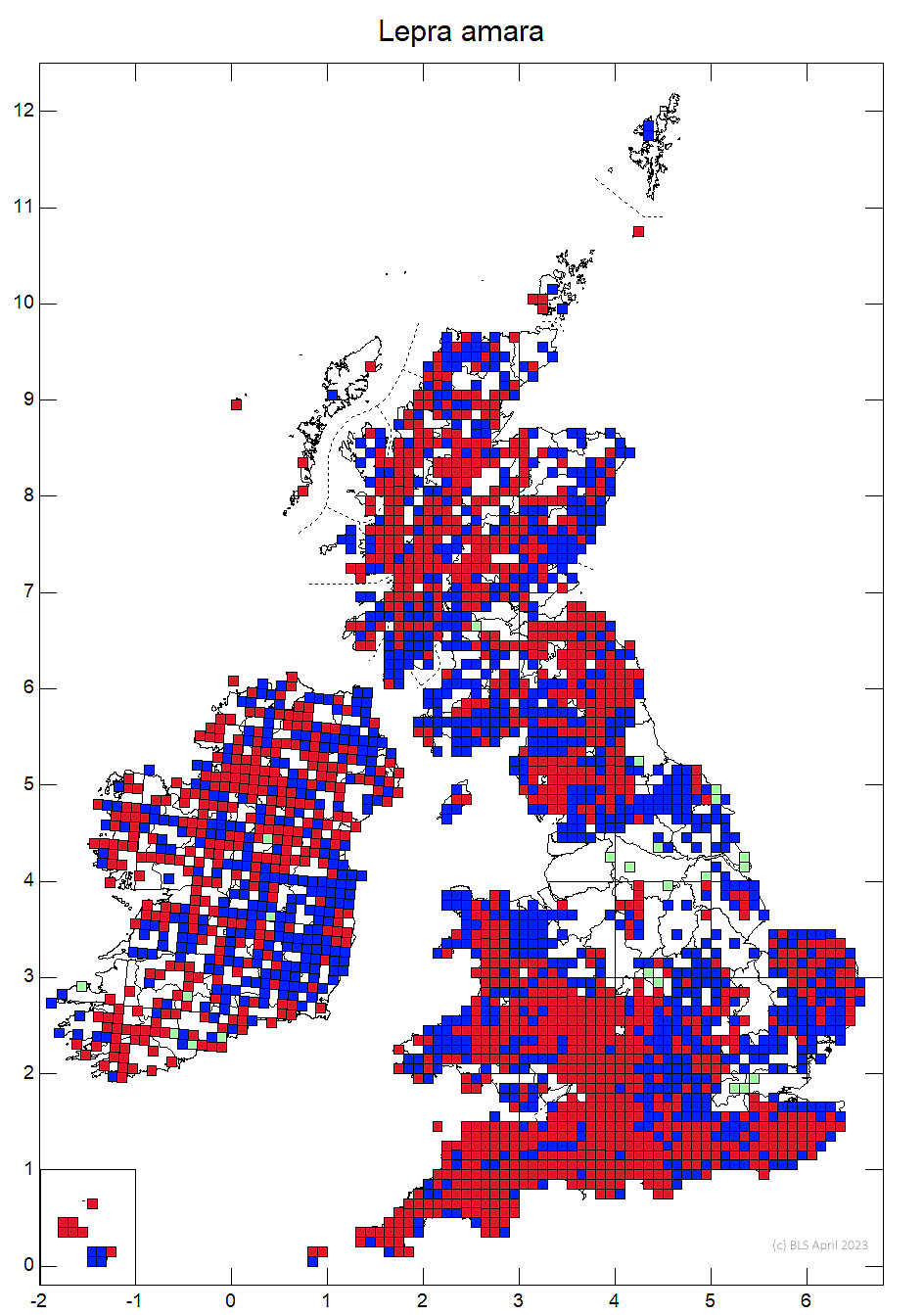Lepra amara
A common epiphytic lichen found on mesic bark and rarely in the ground and rocks, marked by white punctiform soralia on a grey thallus. Best distinguished from the similar looking Lepra albescens by the KC+ violet spot test or the extremely bitter taste at the back of the throat, both due to picrolichenic acid.
Like Lepra albescens, but the thallus is often smaller and less well-zoned at the margin. The soralia are typically smaller, sometimes punctiform, 0.5–1.5 mm diam., discrete or occasionally contiguous, rather regularly scattered over the thallus and with an extremely bitter taste due to picrolichenic acid. Apothecia not known (see note on L. slesvicensis below). Soralia and medulla C–, K– (K + reddish brown after a few hours), KC+ violet, Pd–, UV– (picrolichenic acid).
The intensely bitter taste due to picrolichenic acid (KC+ violet) is only encountered in this species, L. melanochlora and L. pulvinata. Lepra amara is very variable, even when those species are excluded. Morphs with a thin thallus and markedly radiating prothallus occur on ± porous rocks. Bark-inhabiting colonies with indistinct, ± endophloeodal thalli and excavate soralia occur on smooth bark of Sorbus aucuparia in old woodland in Wales and probably elsewhere.
A morph with picrolichenic acid and a largely similar thallus, but with protocetraric acid (Pd+ red) and apothecia that develop from soralia was described as Pertusaria slesvicensis Erichsen and treated as Lepra slesvicensis by Hafellner & Türk (2016). However, Tønsberg (1992) considered it to be a fertile morph of L. amara, and noted that protocetraric acid was present only in the apothecial tubercles. Material corresponding to this morph has been reported from the Isle of Wight, Jersey and Devon (Chambers et al. 2009). No sequences appear to be available, and its status needs confirmation, with an alternative possibility that this taxon may be, or include, fully fertile Lepra pulvinata.
Lepra pulvinata has been included in L. amara as a form, but was shown by Kondratyuk et al. (2015) to be distinct using molecular data; it has a thallus forming ± compact cushions, the upper surface warted-papillate with the apices and ridges breaking down into small, elevated, punctiform soralia, never forming discrete round soralia. L. melanochlora is isidiate rather than sorediate, and the KC+ reaction is fleeting and magenta rather than violet.
On a wide range of broad-leaved trees, rarely conifers, rarely on the ground and on low vegetation, occasionally on sheltered, humid, siliceous rock.

Common, throughout Britain and Ireland.
Cannon, P., Kukwa, M., Coppins, B., Fletcher, A., Sanderson, N. & Simkin, J. (2021). Pertusariales: Ochrolechiaceae, including the genera Lepra, Ochrolechia and Varicellaria.Revisions of British and Irish Lichens 5: 1-17. Link
Chambers, S.P., Gilbert, O.L., James, P.W., Aptroot, A. & Purvis, O.W. (2009). Pertusaria. In Lichens of Great Britain and Ireland (Smith, C.W., Aptroot, A., Coppins, B.J., Fletcher, A., Gilbert, O.L., James, P.W. & Wolselsey, P.A. eds): 673-687. London: British Lichen Society.
Hafellner, J. & Türk, R. (2016). Die lichenisierten Pilze Österreichs – eine neue Checkliste der bisher nachgewiesenen Taxa mit Angaben zu Verbreitung und Substratökologie. Stapfia 104(1): 216 pp.
Kondratyuk, S.Y., Lőkös, L., Kim, J.A., Kondratiuk, A.S., Jeong, M.-H., Jang, S.H., Oh, S.-O. & Hur, J.S. (2015). New members of the Pertusariales (Ascomycota) proved by combined phylogenetic analysis. Studia bot. hung. 46: 95–110.
Tønsberg, T. (1992). The sorediate and isidiate corticolous crustose lichens in Norway. Sommerfeltia 14: 1-331.
Text by Neil A Sanderson based on Cannon et al (2021)
